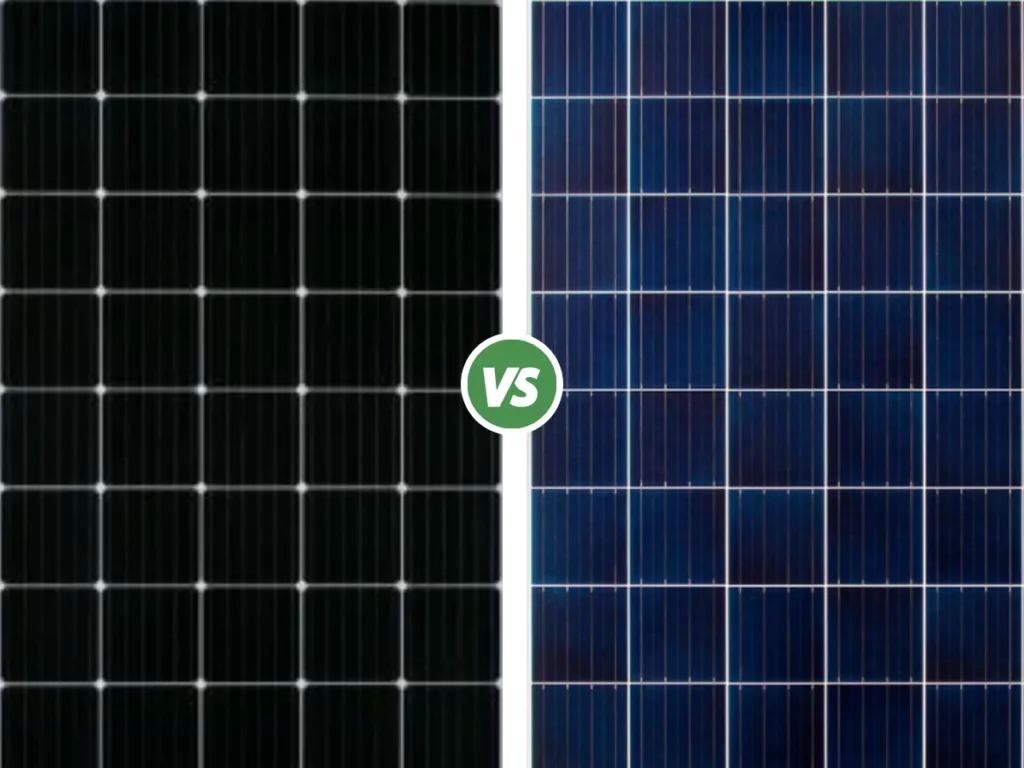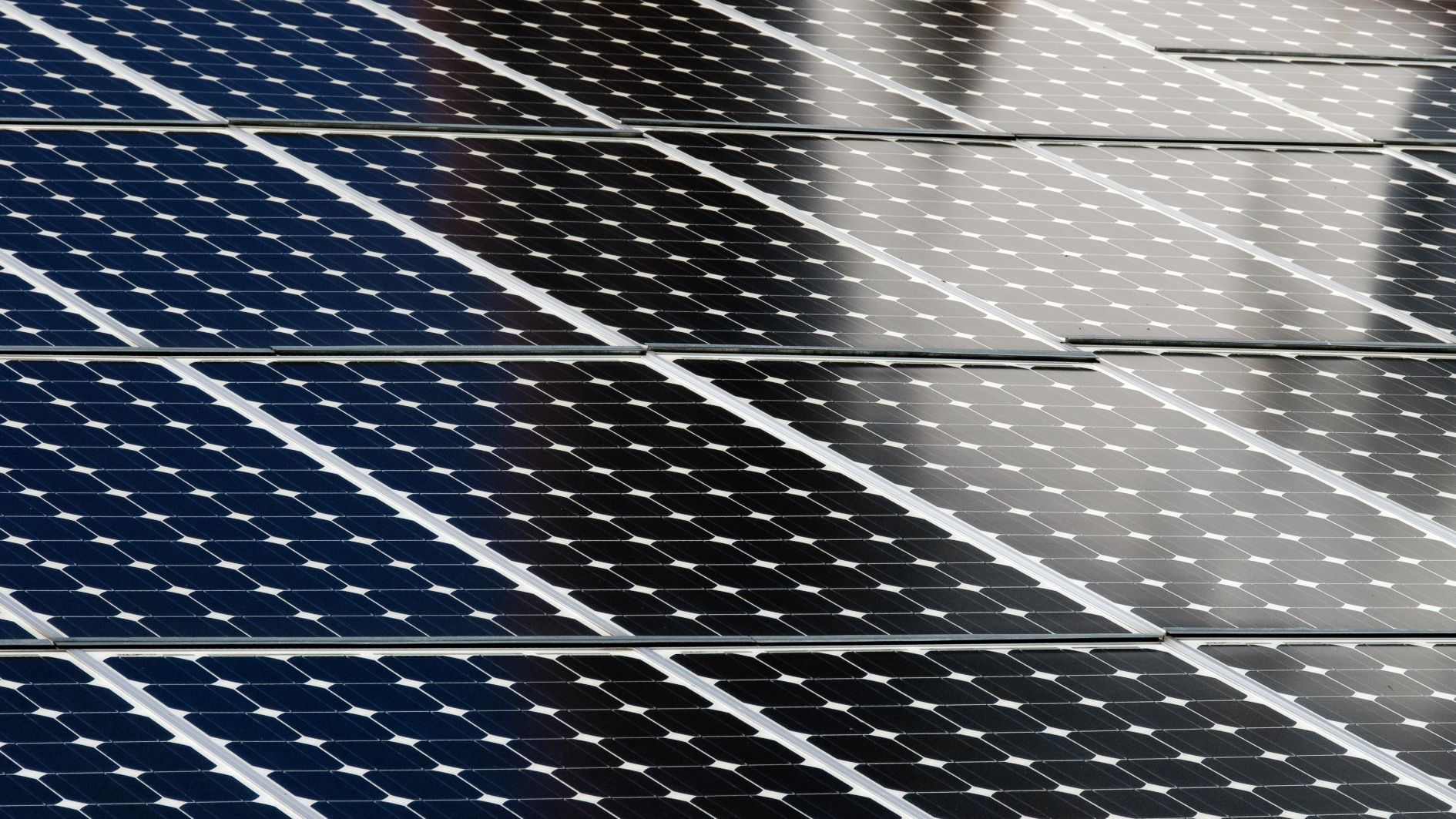Image source: Canva.com
When considering solar panels for your home or business, one of the key decisions you’ll face is choosing between monocrystalline and polycrystalline solar panels. Both types of panels convert sunlight into electricity, but they have distinct differences in terms of efficiency, cost, appearance, and suitability for different installations. Understanding these differences can help you make an informed choice that best suits your energy needs and budget.
What Are Monocrystalline and Polycrystalline Solar Panels?
Both types of panels are made from silicon and convert solar energy into electricity. The main difference lies in the type of silicon used:
Monocrystalline panels: Made from a single silicon crystal, they offer higher efficiency and a sleeker appearance.
Polycrystalline panels: Made from multiple silicon fragments melted together, they are typically less efficient but cheaper.

Monocrystalline Solar Panels
Monocrystalline solar panels are made from a single, continuous crystal structure, typically silicon. These panels are easily recognizable by their uniform, dark appearance and rounded edges on each cell. The manufacturing process involves slicing thin wafers from a cylindrical silicon ingot, which is then used to create the cells that make up the panel.
Advantages of Monocrystalline Panels

Higher efficiency: Monocrystalline panels are known for their high efficiency, often ranging from 15% to 22%. This means they can convert more sunlight into electricity compared to other types of panels, making them ideal for installations where space is limited.
Longer lifespan: Monocrystalline panels tend to have a longer lifespan, often backed by warranties of 25 years or more. Their durability and performance over time make them a reliable long-term investment.
Aesthetic appeal: The uniform dark color and sleek design of monocrystalline panels are often preferred for residential installations where appearance is a consideration.
Disadvantages of Monocrystalline Panels
Higher Cost: Due to the complex manufacturing process and higher efficiency, monocrystalline panels are typically more expensive than polycrystalline panels.
Wasteful Production: The production of monocrystalline panels involves more waste, as the cylindrical silicon ingots must be cut into rectangular shapes, resulting in some unused material.

Polycrystalline Solar Panels
Polycrystalline solar panels, also known as multicrystalline panels, are made from silicon crystals that are melted together to form the panel cells. This process creates a less uniform structure, giving the panels a distinctive blue, speckled appearance. Polycrystalline panels are generally less efficient than monocrystalline panels but are also less expensive to produce.
Advantages of Polycrystalline Panels

Lower Cost: Polycrystalline panels are typically more affordable than monocrystalline panels, making them a popular choice for budget-conscious consumers or larger installations.
Less Wasteful Production: The manufacturing process for polycrystalline panels is less wasteful, as it involves melting and reusing silicon fragments, leading to a lower overall cost.
Adequate Performance: While slightly less efficient than monocrystalline panels, polycrystalline panels still offer a good balance of performance and cost, making them suitable for installations where space is not a primary concern.
Disadvantages of Monocrystalline Panels
Lower Efficiency: Polycrystalline panels usually have an efficiency range of 13% to 16%, meaning they require more space to produce the same amount of electricity as monocrystalline panels.
Less Aesthetic Appeal: The blue, speckled appearance of polycrystalline panels is often considered less visually appealing, which may be a factor in residential installations.
Slightly Shorter Lifespan: Polycrystalline panels generally have a slightly shorter lifespan compared to monocrystalline panels, though they still offer warranties of 20 to 25 years.

Key Metrics Comparison
| Metric | Monocrystalline panels | Polycrystalline panels |
| Cost | More expensive | Less expensive |
| Efficiency | More efficient | Less efficient |
| Color | Black hue | Blue hue |
| Lifespan | 25+ years | 25+ years |
| Temperature coefficient | Lower (more effective in heat) | Higher (less effective in heat) |
Which Type of Solar Panel Is Right for You?
The choice between monocrystalline and polycrystalline solar panels largely depends on your specific needs, budget, and installation conditions.
Monocrystalline Panels
These are ideal for homeowners or businesses with limited roof space who want to maximize energy production. Their higher efficiency and longer lifespan make them a good investment if you can afford the initial higher cost.
Polycrystalline Panels
These are a great option if you’re working with a larger installation area or are seeking a more cost-effective solution. They offer good performance at a lower cost, making them suitable for those who want to go solar without breaking the bank.

Both monocrystalline and polycrystalline solar panels have their unique strengths and trade-offs. Monocrystalline panels offer higher efficiency and a longer lifespan, making them ideal for situations where space is at a premium or long-term performance is critical. Polycrystalline panels, on the other hand, provide a more affordable alternative that still delivers solid performance, particularly in scenarios where space is not a limiting factor.
Ultimately, the best choice depends on your specific circumstances, including your energy goals, budget, and the physical characteristics of your installation site. By carefully considering these factors, you can select the solar panel type that best meets your needs and helps you achieve your renewable energy goals.
FAQs
Which solar panel is better: monocrystalline or polycrystalline?
Monocrystalline panels offer higher quality and efficiency, making them more expensive but requiring fewer panels to generate the same amount of power. In contrast, polycrystalline panels are more affordable but have lower efficiency, necessitating a larger array to achieve similar power output.
Which type of solar panel is the most efficient?
Monocrystalline solar panels are typically the most efficient option available. Their single-crystal cell structure enables a more efficient flow of electrons, enhancing energy conversion. However, their high efficiency and intricate manufacturing process result in a higher cost compared to other types of solar panels.
Which type of solar panels performs better in hot climates?
Monocrystalline panels typically perform better in hot, dry environments due to their lower temperature coefficient. This means they are less affected by high temperatures compared to polycrystalline panels. However, they can be more sensitive to cooler temperatures.
Can you mix polycrystalline and monocrystalline solar cells?
Technically yes, but it’s not recommended due to differing electrical characteristics. Consult a professional if you need to mix them.





